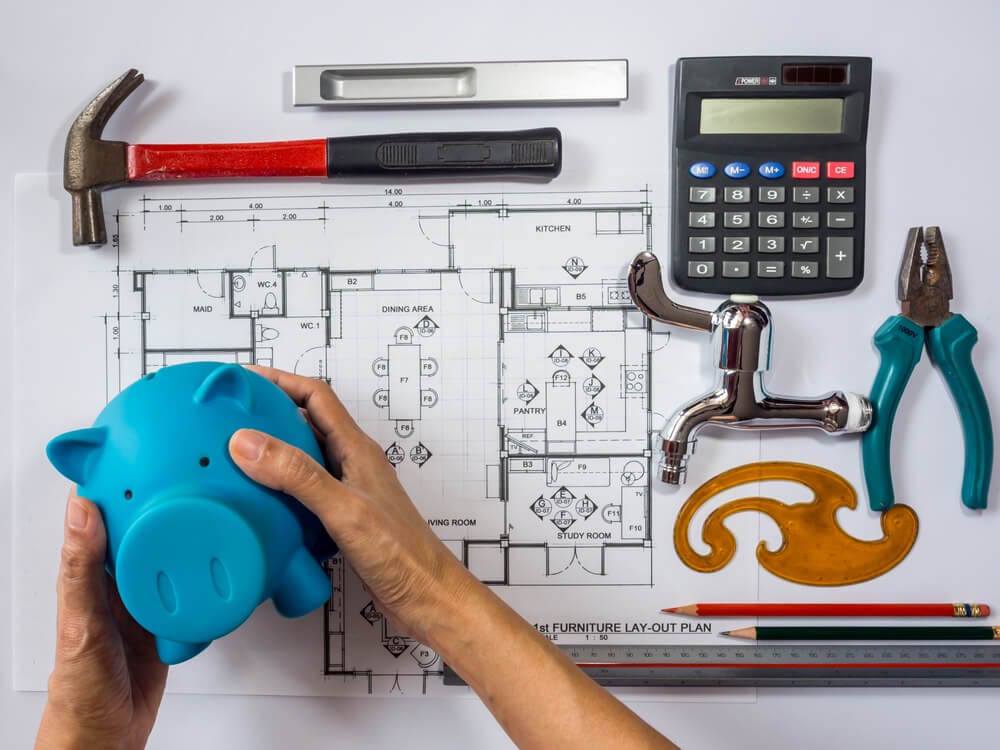Surely while flipping channels you’ve run across a cable TV show about buying a run-down home as the stars of the show magically refurbish the dilapidated property. 30 minutes later you can hardly recognize the new creation. It seems everything they touch turns to gold. Of course that’s not the way it is in the real world.
Sure, you can find a fixer-upper somewhere and attempt to perform the same magic but the truth is that not every distressed property you see on television ends up as someone’s dream home. However, for those in the real world who do want to find an undervalued property that simply needs some TLC, there are some financing programs you need to know about.

Most financing programs are used to buy a property but there are few that allow you to finance the home as well as roll in additional funds to be used for a remodel or repairs.
There are two that are the most common, the FHA 203(k) loan and Fannie Mae’s HomeStyle Renovation mortgage.
Let’s take a closer look at both.
FHA 203(k)
Perhaps the most-used renovation loan is the FHA 203(k) loan. It’s been around it seems for as long as anyone can remember but not every mortgage lender offers the program, and that’s a shame because it allows buyers with a limited down payment buy a home that needs some repairs, make those repairs and end up with a newly remodeled property that might have once been an eyesore in the neighborhood.
The 203(k) loan can be used for most any repair or remodel, even properties with extensive damage as long as the original foundation is still secure or can be repaired using the 203(k) loan. This program asks the repairs be for at least $5,000 and be itemized by a contractor. When you first identify a property, you’ll need to hire a 203(k) certified consultant who will review the property and the work needing done to make sure the property will be eligible for 203(k) financing. The consultant will estimate the costs needed, lay out the construction plans and lays out the process. Your FHA approved lender can help you find a local FHA 203(k) certified consultant.
Recall that one of the most appealing features of the FHA loan is the small down payment needed and that’s no different with the 203(k). The down payment for this program is also just 3.5% based upon the “as completed” value. Once the repairs have been identified and the cost estimate prepared, the plans and specifications for the project along with the FHA loan application is delivered to the lender. And note the maximum loan amount cannot be any greater than 110% of the final appraised value as well as still meet area FHA loan limits.
Here in San Diego County, the maximum FHA loan is for 2017 will be $612,950. Most anything can be repaired or remodeled using the 203(k) program. The lender approves the loan application, the repairs are completed and the buyers move in.
There have also been recent adjustments to the FHA 203(k) program which have a slimmed-down version of the full 203(k) loan. As long as there are no structural additions such as adding a new room or square footage, a “lite” version allows borrowers to add up to $35,000 to the loan to be used for things such as roof work, gutters, decks, patios, HVAC, windows and doors, plumbing and electrical and flooring. You can even buy and finance new appliances or even have your home painted.
Let’s say you find a home listed at $300,000 and the consultant determines the repairs will cost $50,000. 3.5% of $350,000 is $12,250 for a base loan amount of $337,750. When you add the upfront mortgage insurance premium of $5,910, the loan amount ends up being $343,660. Standard closing costs and mortgage insurance premiums apply. You’ll also impound for taxes and insurance. With 203(k) light and only limited repairs needed and no square footage added, borrowers will just add the needed funds to the loan not to exceed the maximum.
Fannie Mae’s HomeStyle Renovation Loan
A similar program is also available but hasn’t been around as long as the FHA program. Standard down payment requirements apply with as little as 5.0% down is needed yet for those with at least a 20% down payment, there will be no need for mortgage insurance. The down payment is based upon the appraiser’s “as completed” property appraisal. HomeStyle allows for the financing of not just labor and materials but also so-called “soft costs such as permits, licensing and engineering services.
The minimum down payment is based upon the lower of the appraiser’s estimate of value after the repairs have been made or the cost basis of the home. The cost basis is the sales price of the home plus the costs to renovate, including soft costs. Your lender will help walk you through the final loan amount, but just remember it will be the lower of the final appraised value or cost.

Fannie’s HomeStyle loan is similar in process to the FHA 203(k) loan yet because FHA loans are only available to buy and finance an owner occupied property, the HomeStyle is available to be used by investors. Investors can expect to make a minimum down payment of at least 10 percent of the final value or 20 percent to avoid PMI.
This renovation loan program allows for the added costs to be up to 50% of the as completed value but must still meet Fannie’s conformation loan limit for San Diego County which will be $612,950 staring in 2017.
These two programs are arguably the least-used yet most valuable loan programs available and are very competitive in rate. If you’ve got your eyes on a fixer-upper or you’ve always thought about buying a property that needs some TLC and finance the cost of repairs with just one loan, either of these programs will work for you.


